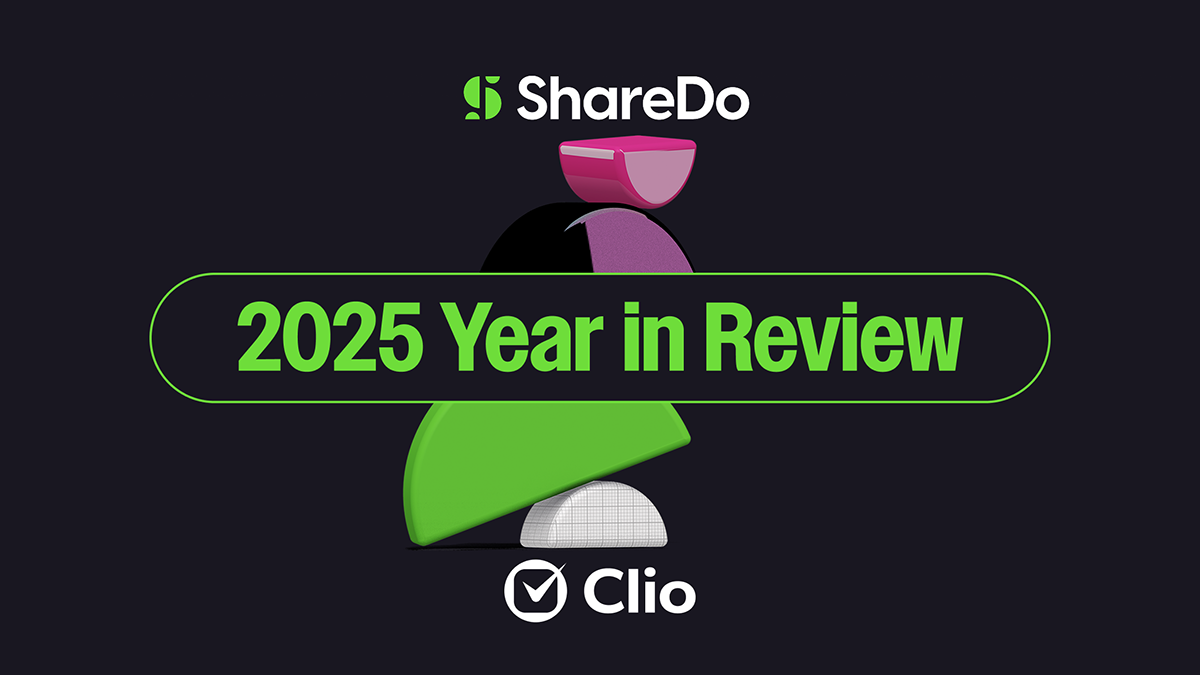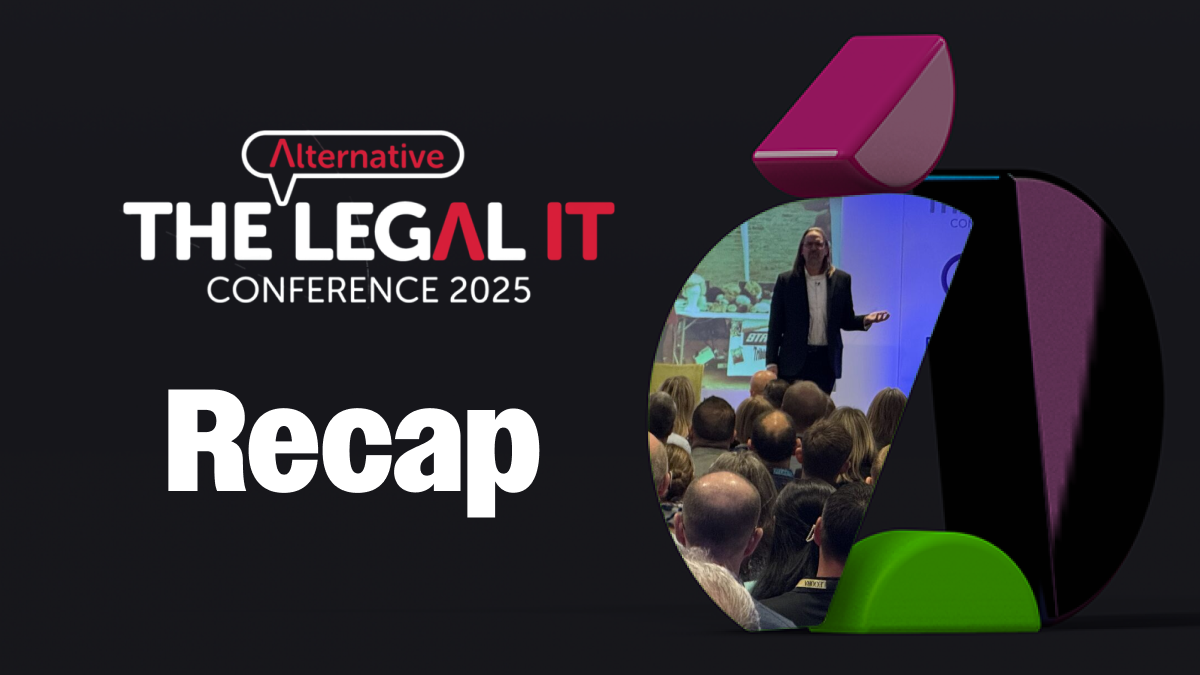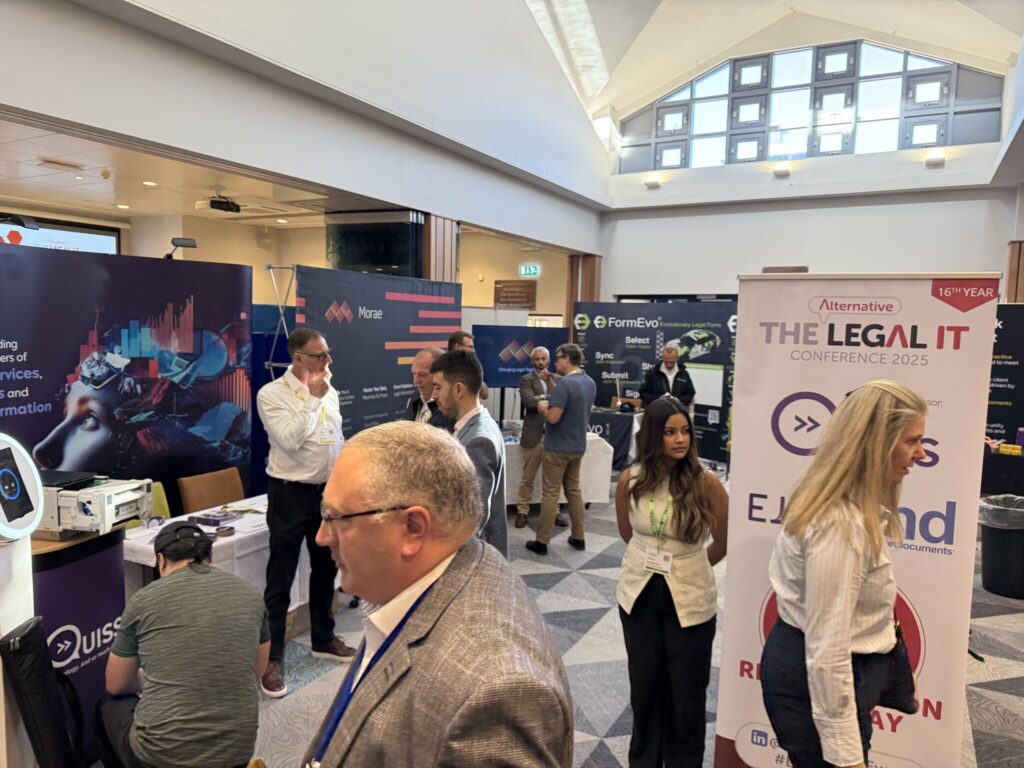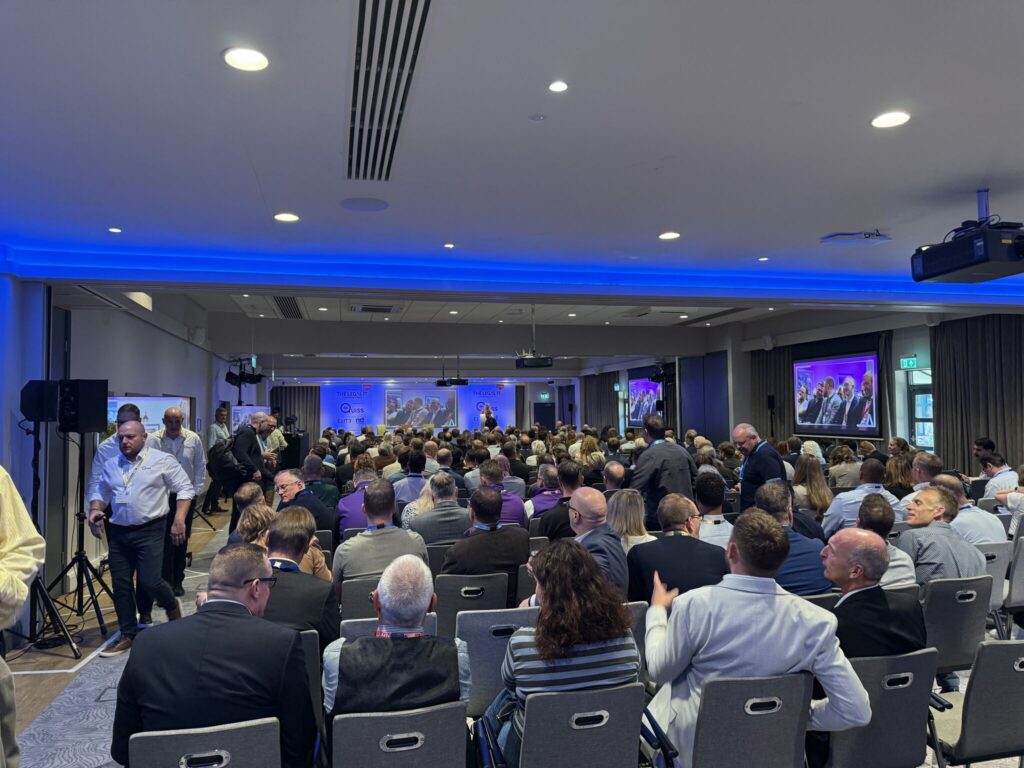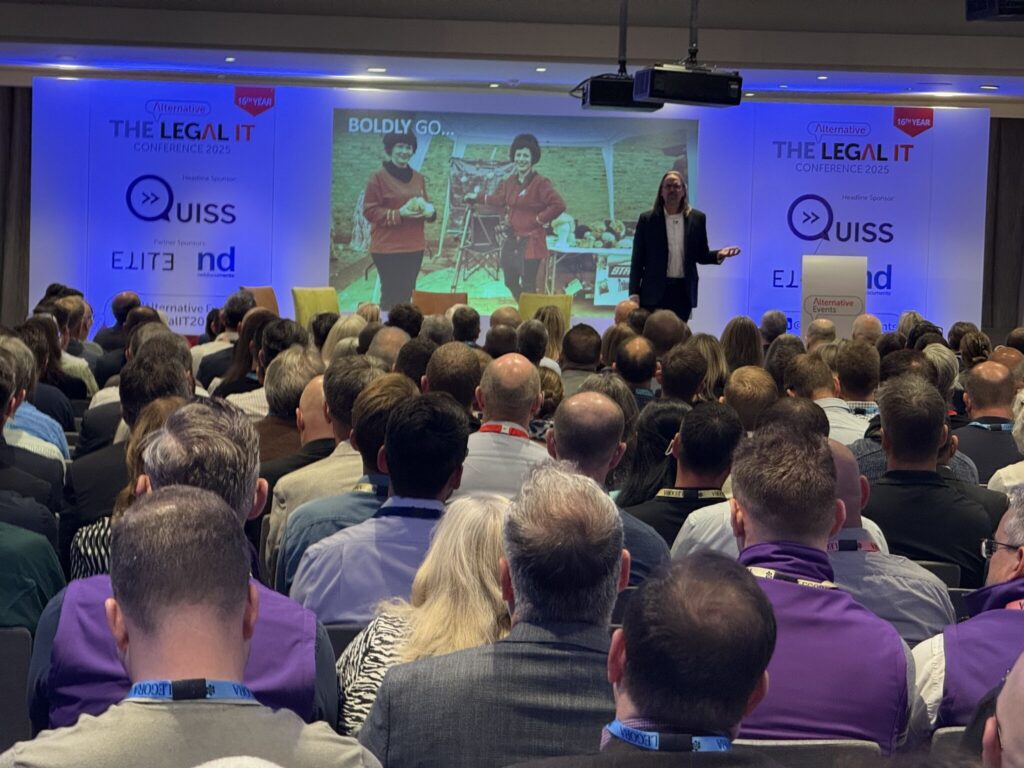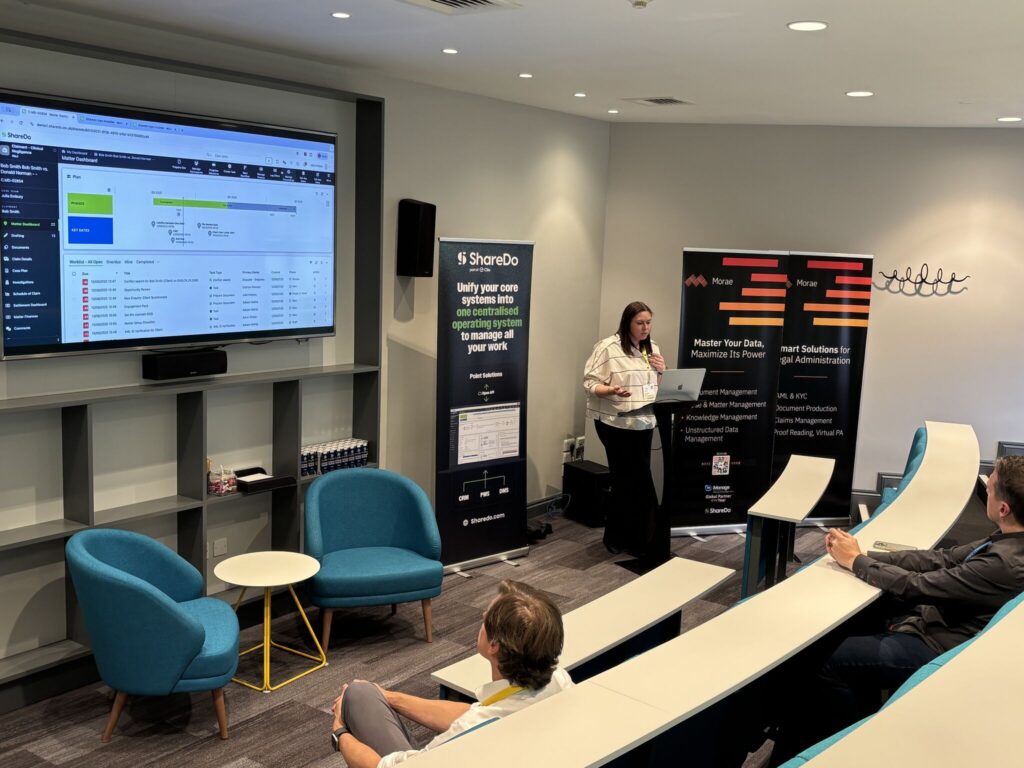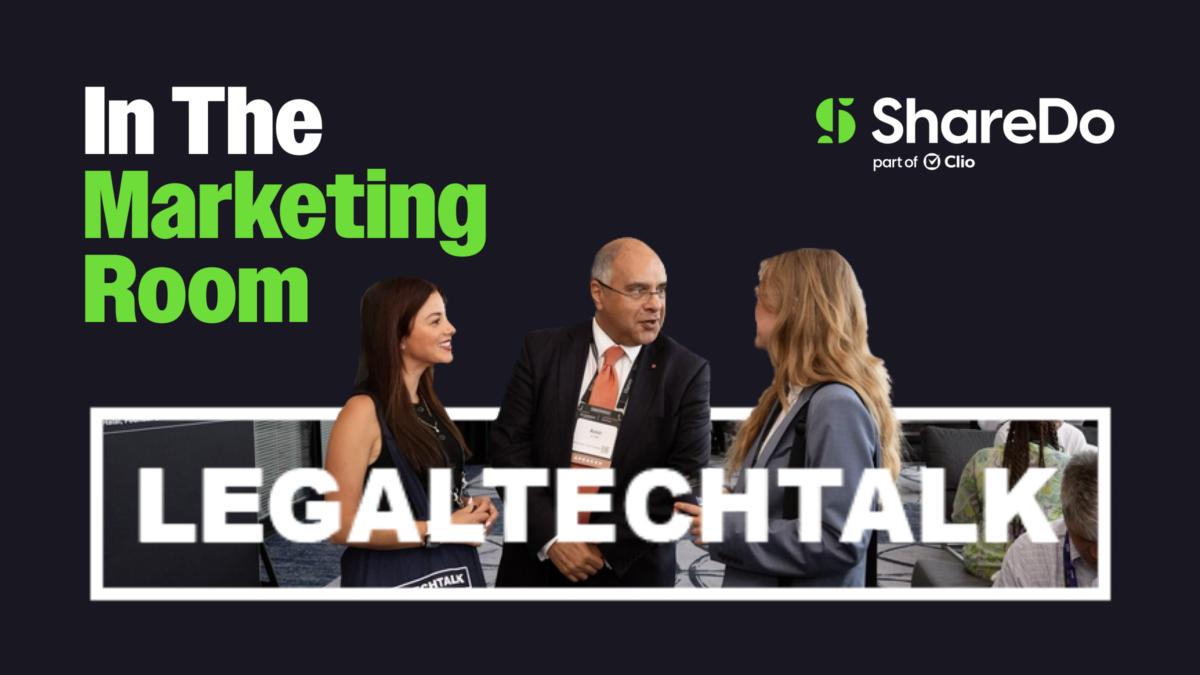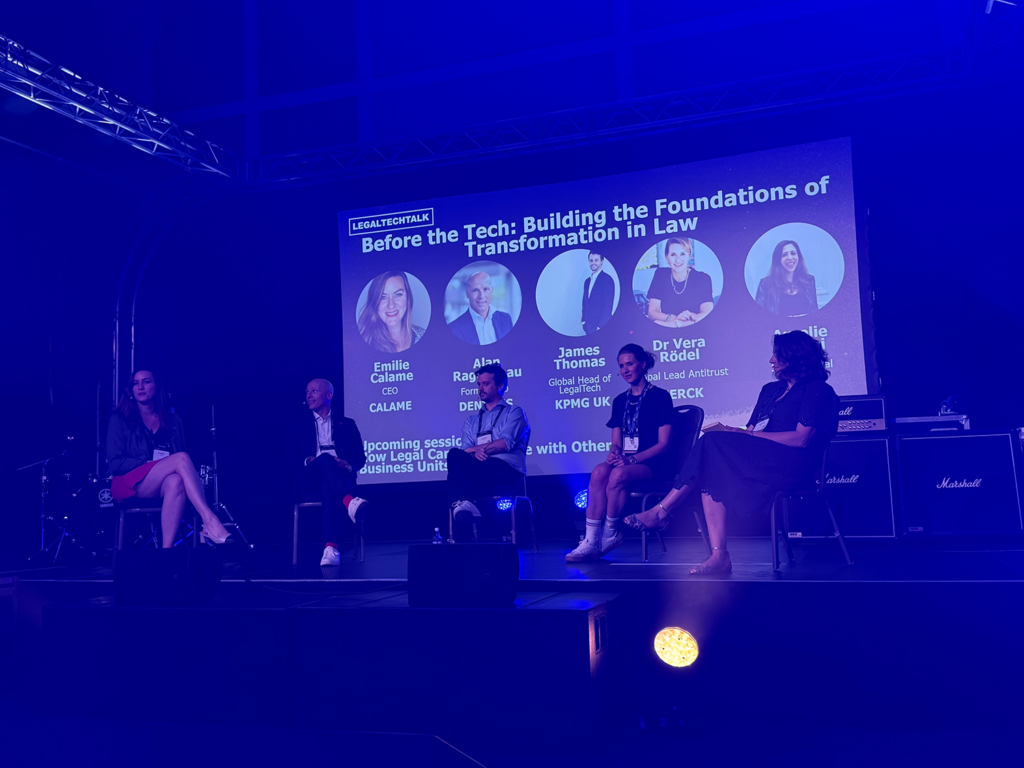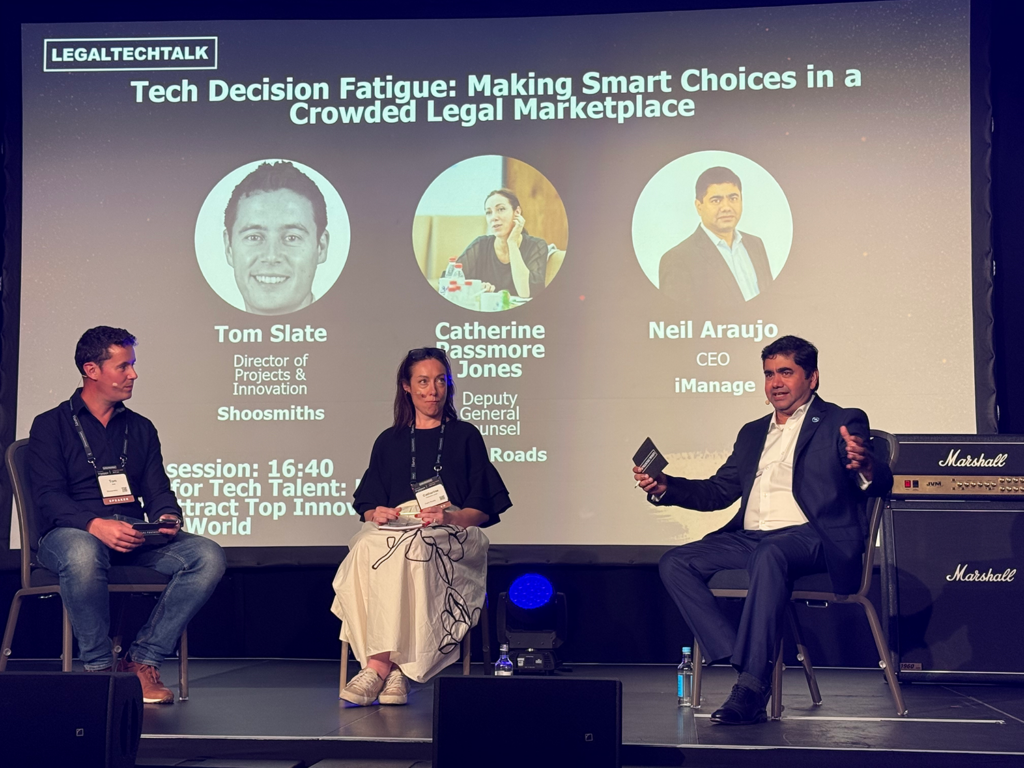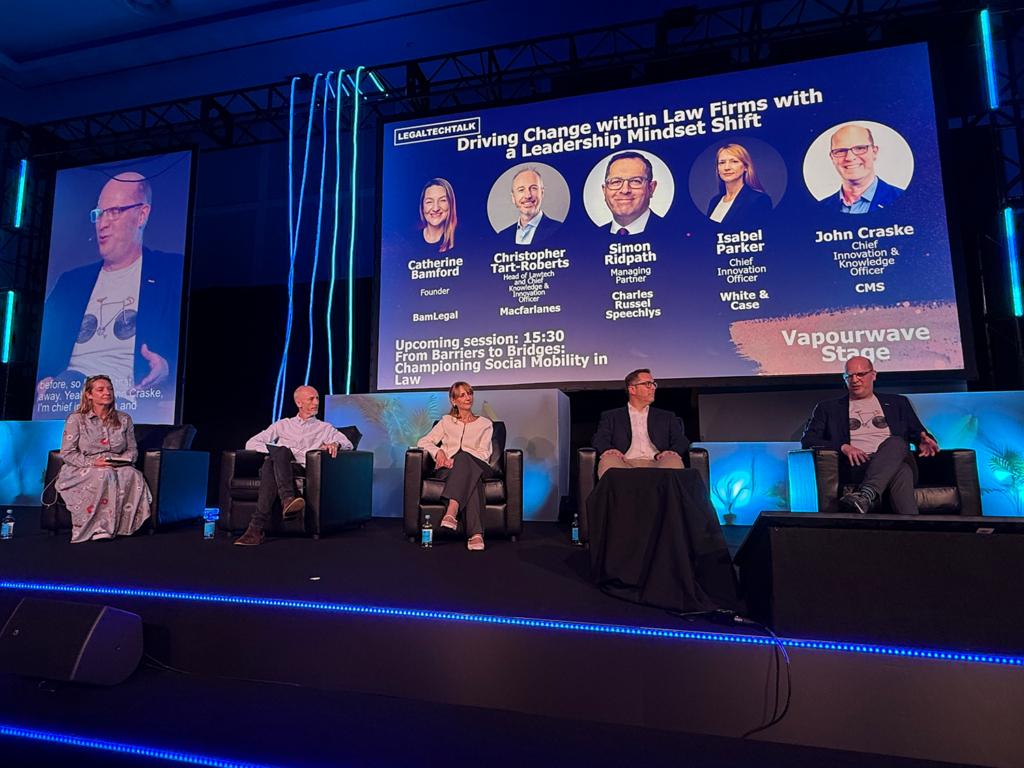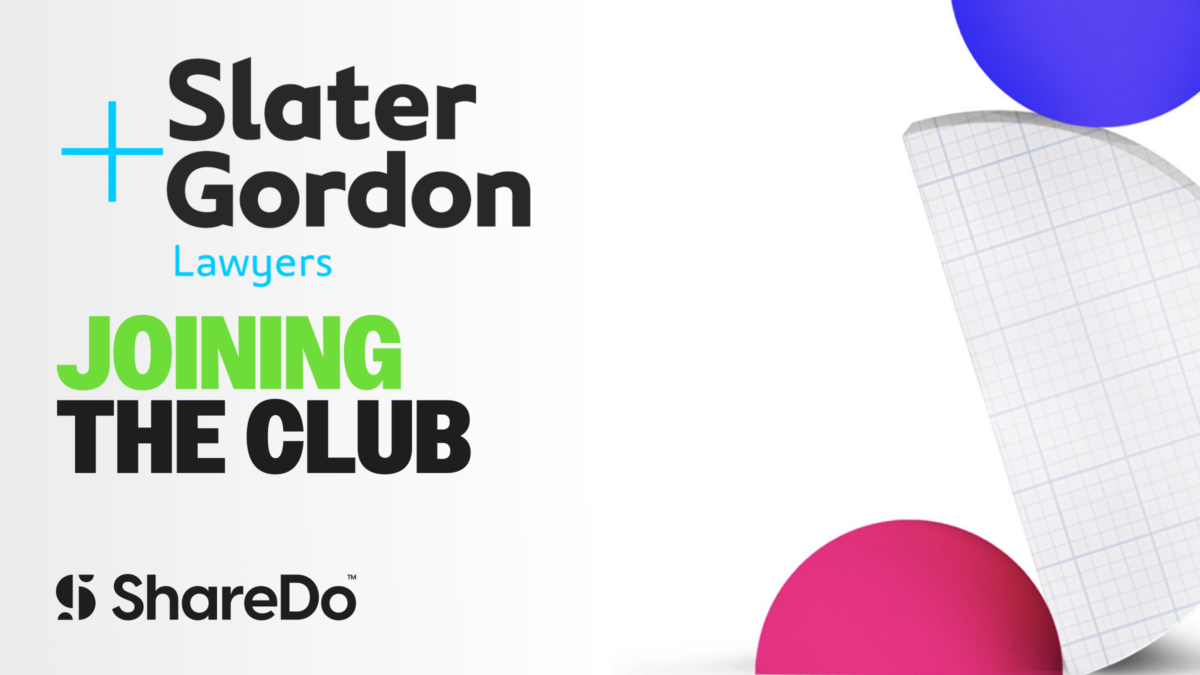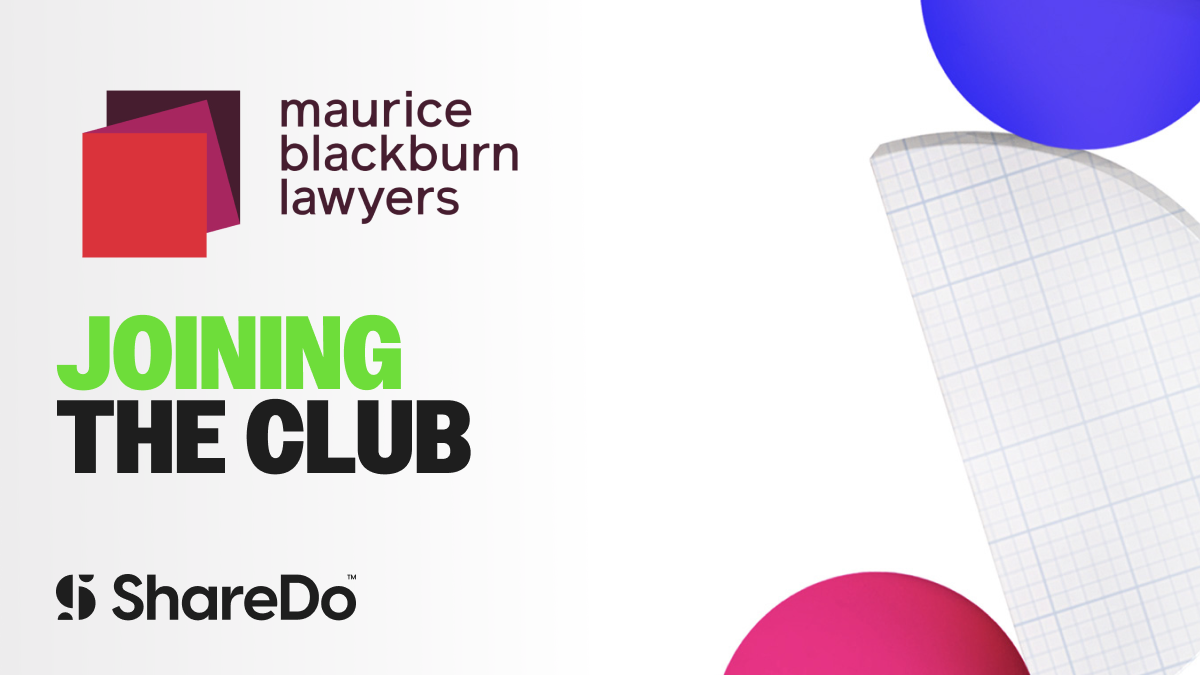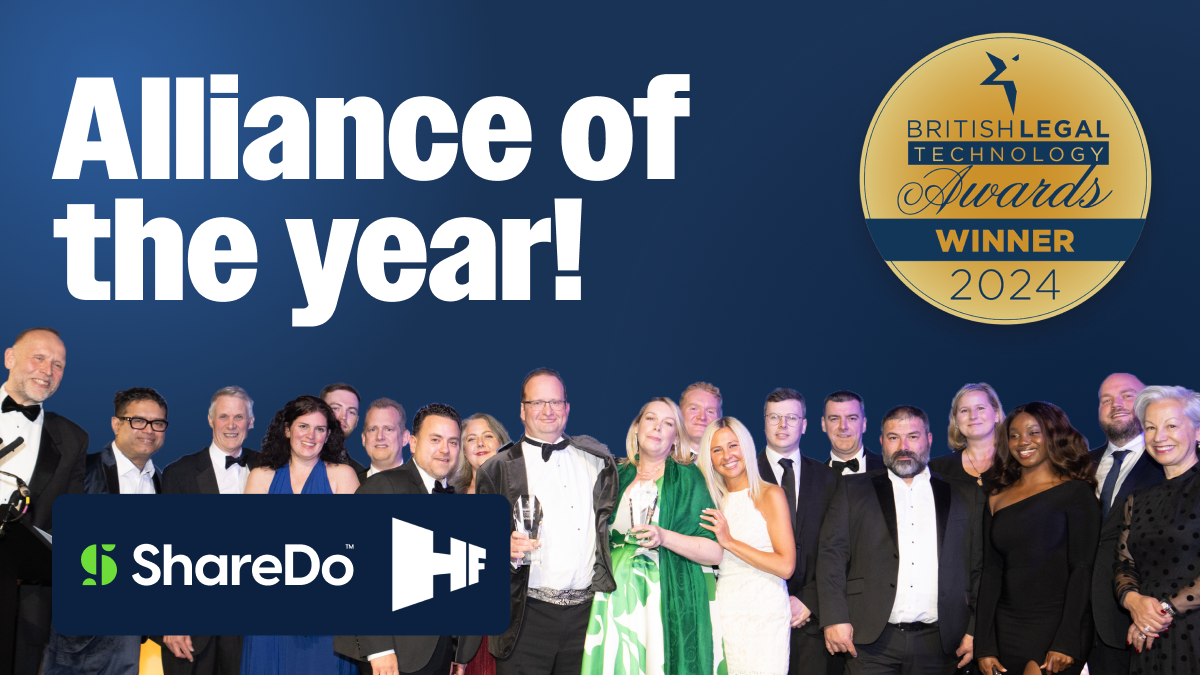A Look Back on 2025: ShareDo’s Year of Transformation and Scale
Nicole Canning
on
December 18, 2025
For many senior leaders in law, 2025 will be remembered as the year that demanded efficiency, accountability and clear results. After years of speculation, AI moved from promise to practice. Technology choices carried immediate competitive consequences. Fragmented, legacy systems became more than an operational drag — they became a risk.
Against this backdrop, ShareDo — now Clio Operate — focused on a clear mandate: equipping enterprise legal teams with the structural scale and stability to harness intelligence safely. As part of the Clio organisation, we accelerated that mission, supported by the acquisitions of vLex and Vincent AI. We recognise that change brings uncertainty; yet the message from clients has been consistent: legal teams are ready to modernise, provided the path is stable and the partner is proven.
This year culminated in the completion of the vLex acquisition, a Series G funding round and a $5 billion valuation for the combined Clio organisation — our strongest commitment yet to our current, and future, enterprise clients.
In this blog, we reflect on the milestones and client decisions that shaped our year, welcome new firms into the community, and share a handful of success stories. Look out for more in 2026, including some of our largest projects and organisation‑wide work management overhauls to date.
Year in Review: Our 2025 Highlights
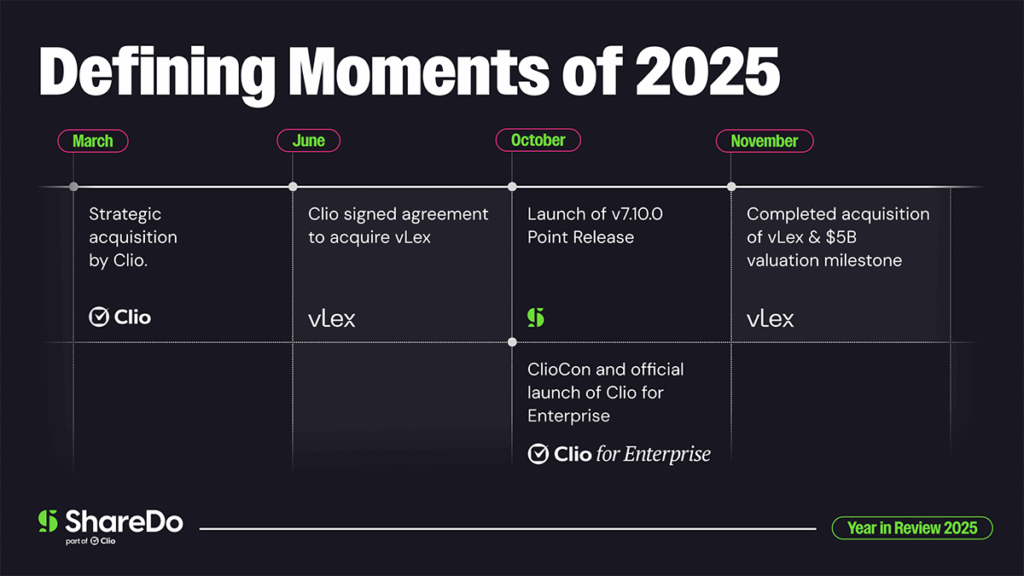
Twelve months can feel brief in a fast‑moving market, but 2025 was defined by decisive action: aligning investment, talent, and product to deliver enterprise‑grade stability and intelligence.
March 2025: ShareDo joins Clio in strategic acquisition.
Clio completed its largest acquisition to date (at the time!), formally acquiring ShareDo and marking a decisive entry into the large law firm and corporate legal market.
June 2025: Clio signs definitive agreement to acquire vLex.
Clio signed the definitive agreement for the US$1 billion vLex acquisition, strategically laying the foundation for our integrated legal intelligence strategy.
October 2025: ShareDo major platform release (v7.10.0).
We delivered Point Release v7.10.0, which included 31 new or enhanced features and 51 usability improvements, demonstrating our velocity in continuous product development.
October 2025: ClioCon and official launch of Clio for Enterprise and Clio Operate
The dedicated Clio for Enterprise division was unveiled at Clio’s annual conference, ClioCon, in Boston. Alongside the launch of the Enterprise division, for the US-market, ShareDo was rebranded Clio Operate, bringing us and vLex’s Vincent AI under one, enterprise-focused roof.
November 2025: Clio completes acquisition of vLex & $5 billion valuation milestone.
The completion of the US$1 billion vLex acquisition and a US$500 million Series G funding round cemented the company’s $5 billion valuation, securing world-class AI assets.
Joining the Club in 2025:
This year, we had the privilege of welcoming 13 new enterprise clients into the ShareDo/Clio Operate community across EMEA and APAC. It’s a milestone we’re proud of — not just for the number, but for the calibre of firms that have chosen to partner with us. In a market defined by change, these leaders prioritised stability, scalability, and a clear product vision. We’re honoured to support their work and to be trusted with platforms that sit at the heart of their operations.
As we close out the year, our community reflects a diverse ecosystem of large law — spanning cross‑border practices, specialist leaders, and multi‑jurisdictional firms. Most recently, ShareDo/Clio Operate was the most-cited case workflow solution in Legal IT Insider’s Top 200 UK Firms Report, an achievement we’re exceptionally proud to see as we support the UK’s leading firms.
The logo wall below offers a snapshot of that breadth and momentum, underscoring the collective strength of firms aligned around a modern, intelligent approach to work management.
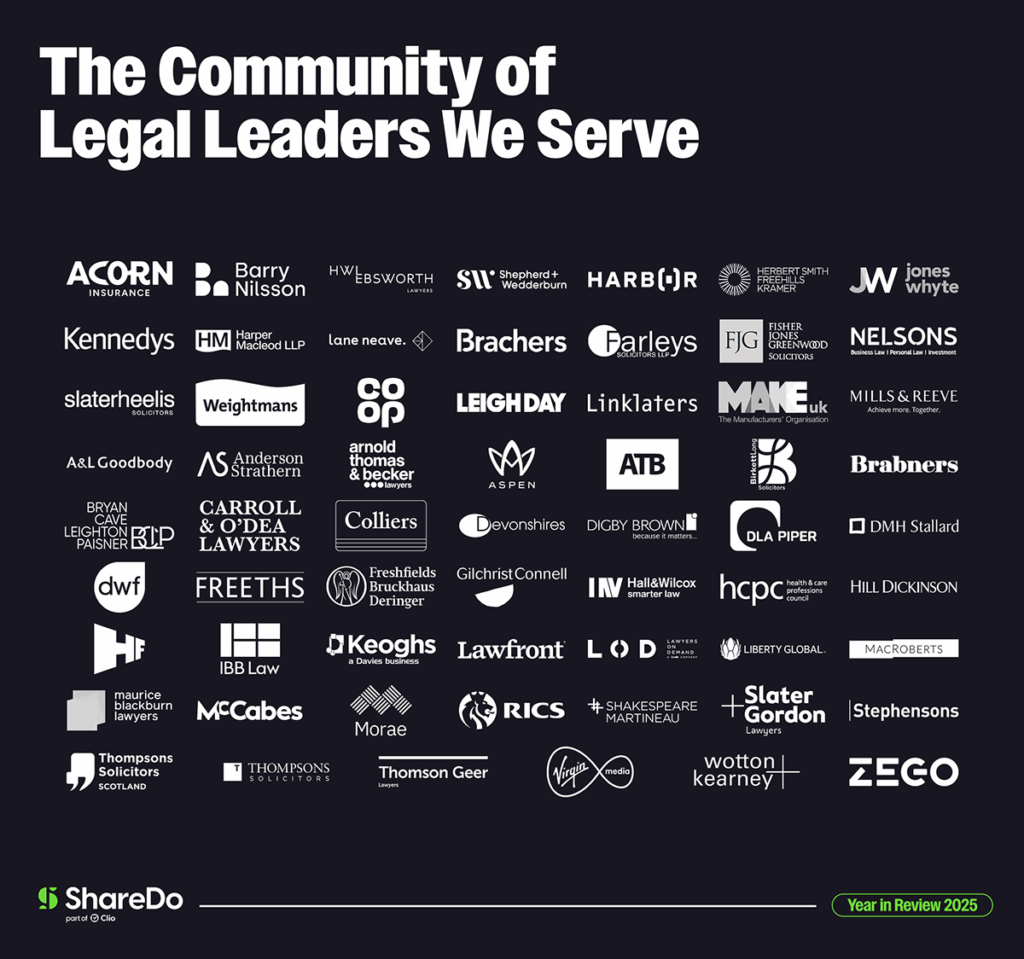
Throughout every engagement, our focus has remained constant: seamless implementation, rigorous change management, and consultative support that minimises disruption and accelerates time‑to‑value. Our enterprise team partners closely with clients to ensure adoption, governance, and measurable outcomes remain front and centre.
2025 Client Partnership Highlights
Mills & Reeve (January 2025)
Mills & Reeve undertook a rigorous two‑year selection process to find a next‑generation matter management platform that could support a diverse practice and scale with the firm. Twenty stakeholders participated in a detailed evaluation — including a seven‑hour deep‑dive — before unanimously selecting ShareDo/Clio Operate.
The decision centred on ease of configuration, accelerator packs aligned to core work types, and a truly unified platform that avoids stitching together disparate tools — alongside robust automation and clear headroom for growth. We are co‑designing a phased rollout with the firm’s Legal Technology & Data team to introduce efficiencies at a sustainable pace and protect business‑as‑usual.
The programme is designed to deliver measurable gains in efficiency and data quality, freeing lawyers to focus on higher‑value work and client outcomes.
Leigh Day (February 2025)
Following an extensive review, Leigh Day selected ShareDo/Clio Operate to replace a legacy CMS that was slowing teams down and demanding constant manual intervention. The firm needed a platform that could integrate with existing tools, reduce administrative burden, and flex to the realities of complex, high‑stakes casework.
ShareDo’s/ClioOperate’s modular design, open integrations and automation capabilities stood out, but so did the partnership approach — co‑creating a clear, phased adoption roadmap to minimise disruption. Implementation is underway with onboarding focused on rapid user confidence and pragmatic change management.
The result is a modern operating environment that improves collaboration and data accessibility today, while positioning the firm to make faster, more informed decisions across its portfolio.
Slater and Gordon (June 2025)
With multiple on‑premises CMSs inherited through acquisitions, Slater and Gordon faced the familiar risks of inconsistent processes, heavy support overheads, and slow change. After a year‑long RFP, ShareDo/Clio Operate met 95% of the firm’s 198‑point evaluation — selected for its cloud‑first architecture, Microsoft‑centric integrations and low/no‑code extensibility, all aligned to a wider strategy to move 95% of operations to the cloud by 2026.
A late‑breaking deadline accelerated phase one: migrating 80 users and over one million documents in just 12 weeks. Using solution accelerator packs, rapid build cycles and an intensive training programme — often delivered within 24 hours of new capabilities — we went live on time, with higher stability and performance from day one. The firm is now progressing complex practice migrations, deeper integrations and targeted automation to compound those early gains.
This is just a couple of this year’s success stories — look out for more in 2026 as we share some of our largest projects and organisation‑wide work management overhauls to date.
Product Updates and Feature Releases: 2025 Highlights
2025 was not simply a year of M&A; it was a year of accelerated investment in the product you rely on every day — from document management to workflow analytics and reporting. The result is a more resilient, intelligent platform designed to reduce complexity and cognitive load for busy legal teams.
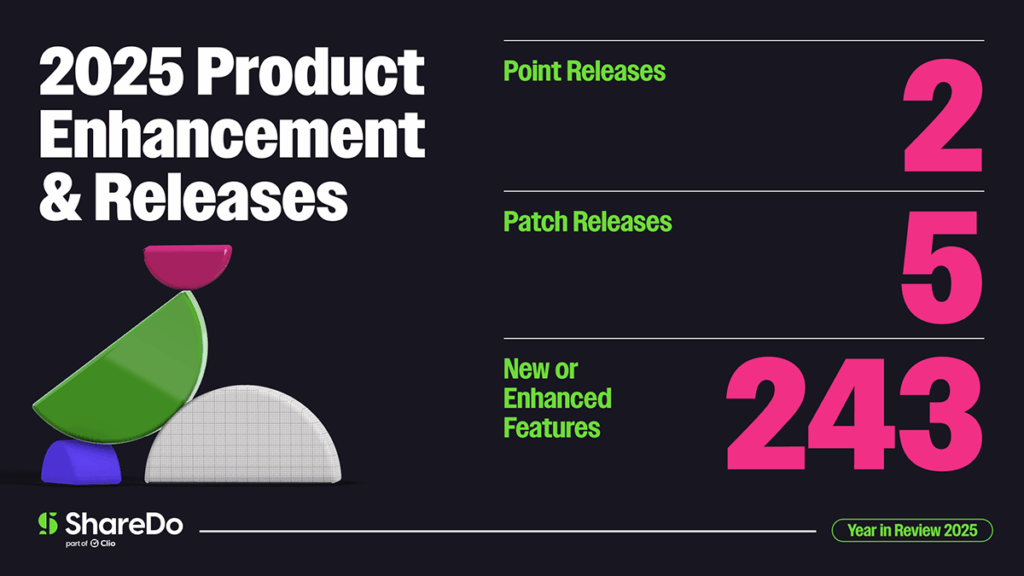
Major Release: Version 7.10.0 (October 9, 2025)
Our point release v7.10.0 was a significant moment for our development programme. This release alone included 31 new or enhanced features and 51 resolved issues, demonstrating our ability to balance strategic integration with relentless attention to usability and security.
Enhanced reporting and data visualisation
Strategic oversight: New Report Designer and Dashboard Design canvases let modellers build custom reports and cohesive visualisations from List View data—giving leadership more granular, real‑time control.
Future‑proofed analytics: Legacy ‘Radar’ and Key Facts widgets deprecated in favour of modern, List View‑based analytics that enable actionable insights.
Workflow analytics and management
Smarter process control: Workflow Analytics surfaces instances, error rates, and durations — accelerating troubleshooting and optimisation for CIOs and COOs seeking performance assurance.
Stronger data governance: New Workflow Actions for Organisations, People, and Locations in the Operational Data Store improve master data management and downstream data quality.
Documents and user experience
Compliance and brand control: Configurable global and individual email signatures — set firm‑wide or allow governed overrides.
Document efficiency: iManage search integration and resizable document previews streamline repository management and review.
ShareDo/Clio Operate Around the World
In 2025, we accelerated our growth beyond the UK — showing up where it mattered, from a milestone ClioCon in Boston to client rooms in Sydney — so firms can adopt secure, scalable innovation with confidence.
The energy was unmistakable at ClioCon. On 16 October, Jack Newton, Clio’s CEO, introduced Clio for Enterprise and positioned ShareDo (now known as Clio Operate) as its adaptive work management backbone.
With more than 2,000 legal professionals in attendance, we were delighted to meet so many from the Clio community — across packed demos, roadmap sessions, and customer roundtables. Demonstrating Vincent by Clio and Clio Operate working seamlessly within daily workflows, we showed how unified legal intelligence reduces context switching and increases matter velocity — practical gains for teams under pressure to deliver more with less. The mood was clear-eyed and optimistic: at enterprise scale, stability and governance are now prerequisites for safe, effective AI adoption.
We also deepened our presence in Australia and New Zealand. In February, our Chief Customer Officer, Jennie Strickland, and colleagues were in Sydney for hands-on work with clients and partners, including a two-day Solution Architecture training and an informal community meet-up. These sessions were as much about listening as enablement — understanding local priorities, change-management realities, and operational constraints.
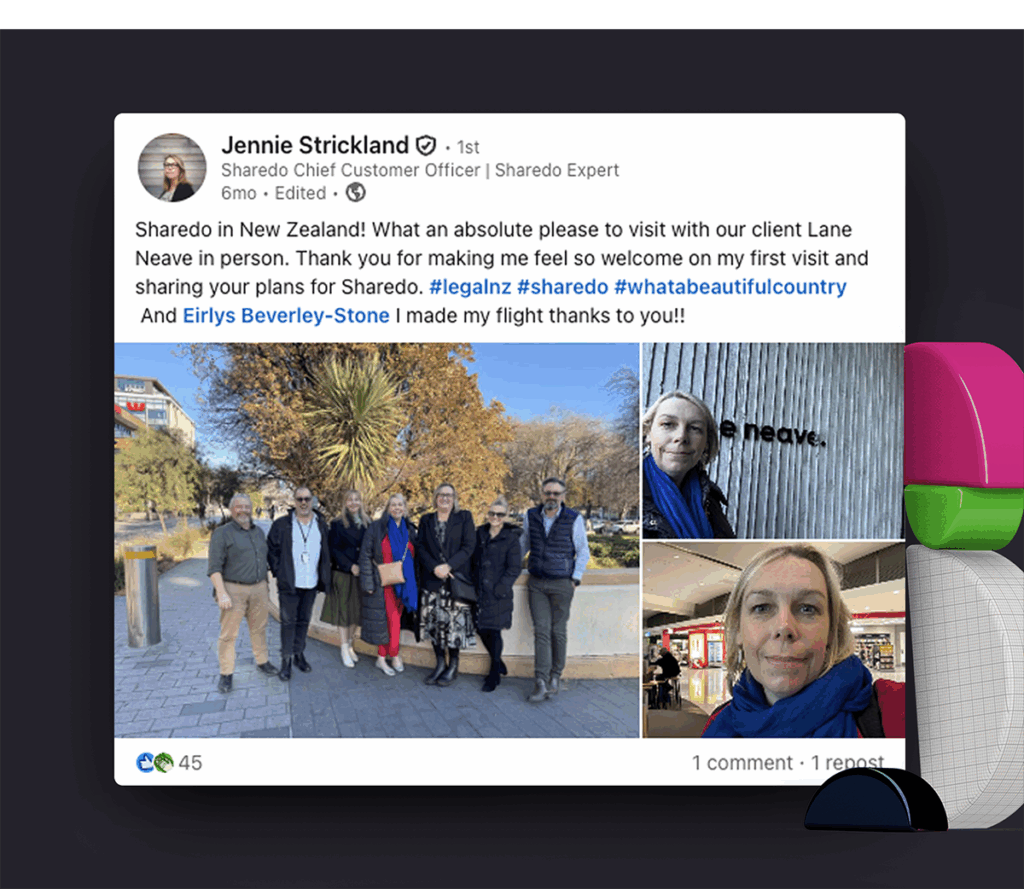
We returned to Australia in October for Clio’s Innovate Legal Summit 2025, strengthening relationships and our regional ecosystem. Our promise remains simple and consistent: we will meet you where you are, with practical guidance and a platform you can trust.
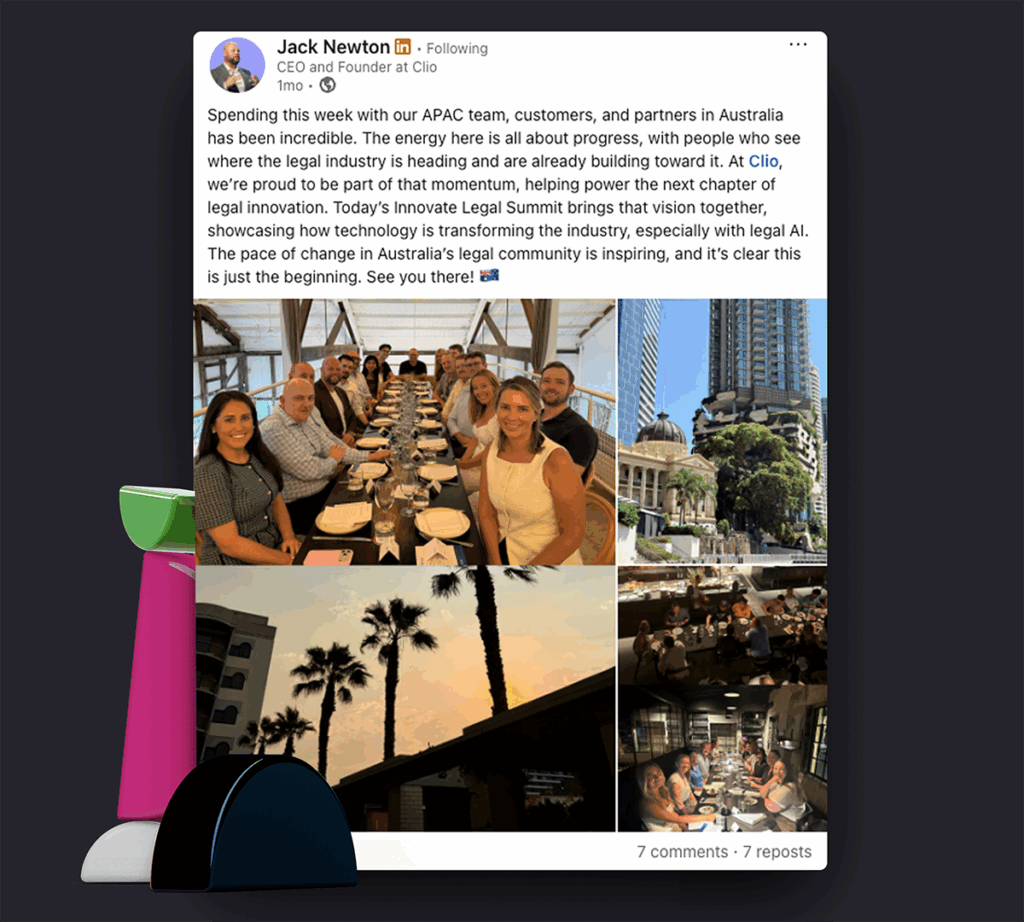
Scaling Our Global Team and Expertise
In 2025, the Sharedo/Clio Operate division added 36 new team members across all departments, including Engineering, Customer Success, Sales, and Marketing. And we’ve expanded our people locations too – with new teammates joining us from across the UK, North America, and APAC.
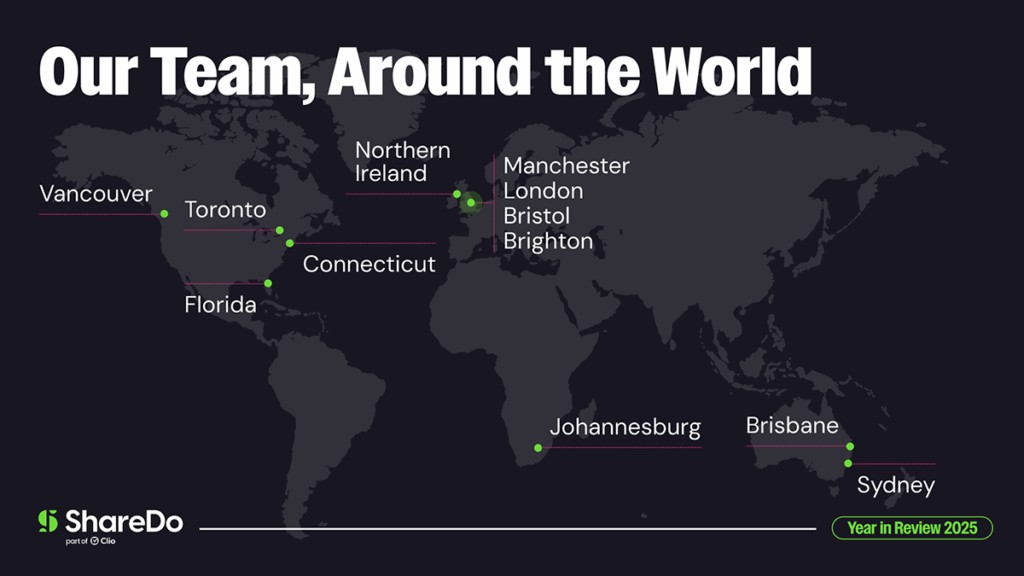
This growth strengthens the disciplines that matter most to enterprise delivery: solution architecture, customer education and success, systems engineering and QA, and market-facing roles that translate complex capability into measurable client outcomes.
This expansion, exemplified by the integration of 350+ experts through the vLex acquisition into the wider Clio organisation, ensures ShareDo/Clio Operate clients benefit from deep expertise across Product, Engineering, and Customer Success — driving continuous innovation and dedicated, enterprise-grade support.
What’s Ahead? The Future of Law with Clio for Enterprise
2025 was a year of strategic consolidation; 2026 is the year we scale those benefits across our global client base. We end the year with a clear sense of purpose and a firm commitment to transforming how law is practised and managed — safely, pragmatically, and at enterprise scale.
Our focus is disciplined innovation. We’re building on 2025’s foundation to deliver new, secure capabilities and cutting‑edge features in Clio Operate — prioritising privacy, governance, and day‑to‑day reliability. Expect responsible AI by design (human‑in‑the‑loop, auditability, and role‑based controls) that makes advanced technology accessible to busy enterprise teams without compromising risk management.
We will also deepen the connection between business operations and legal work. Matter management and workflow orchestration in ShareDo/Clio Operate will integrate seamlessly with the practice of law — powered by research and AI through Vincent by Clio — and complemented by specialist tools like Clio Docket and Clio Library. The outcome is a system that shortens cycle times, improves matter economics, and elevates client value.
As we head into the new year, we’re inspired by the ClioCon 2026 theme, “Go Beyond Limits,” and will help firms challenge constraints with practical tools, robust change‑management support, and measurable outcomes. Our implementation programmes, change management workshops, and customer education will ensure your teams not only adopt new capabilities but realise lasting performance gains.
Thank you for the trust you’ve placed in us throughout this momentous year.
Here’s to another exciting year ahead!

